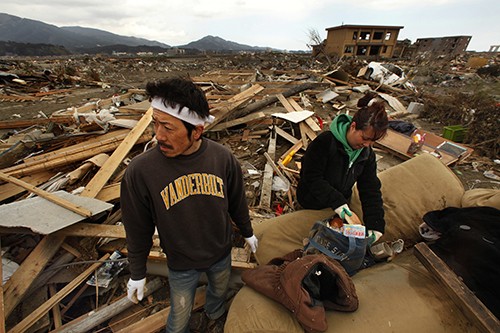TOKYO — Officials at Japan’s stricken Fukushima Daiichi nuclear plant late Sunday retracted their announcement that they had found puddles at the facility’s No. 2 reactor containing 10 million times more radioactivity than would be found in water in a normally functioning nuclear reactor.
“”The number is not credible,”” Tokyo Electric Power Co. spokesman Takashi Kurita, said, according to the Associated Press. “”We are very sorry.””
It was not immediately clear what led to the inaccurate reading of the water, or what the real level was. The company said on its website that there was a “”mistake in the assessment of the measurement of iodine-134.””
The initial announcement of the extremely high levels of radioactivity in the turbine building of the No. 2 reactor was made by Japan’s Nuclear and Industrial Safety Agency, citing Tepco as the source of the data. The alarming announcement raised questions about the source of the radioactivity and the extent of damage to the plant, as well as the threat to workers trying to stabilize the situation at Fukushima, which was crippled by the March 11 earthquake and tsunami.
The subsequent retraction underscored the pressures Japanese officials and Tepco executives face in reporting information to the public. Government authorities and the company have been criticized for not providing information in a timely fashion to the public.
A Kyodo News survey released Sunday found that 58.2 percent of respondents did not approve of the government’s handling of the nuclear crisis at the crippled Fukushima Daiichi nuclear power plant, while 39.3 percent expressed approval.
But now, more than two weeks into the disaster, the updates—via news conferences, press releases, website data charts and Twitter feeds, all laden with technical terms such as “”bequerels,”” “”microsieverts,”” “”millisieverts”” and “”iodine-131″”—have become so frequent and so granular as to become essentially indecipherable and meaningless to the average person.
These days, a citizen in Tokyo concerned about radiation from the plant can check the Ministry of Education, Culture, Sports, Science and Technology’s website for daily atmospheric radiation readings by prefecture around the country, and in drinking water.
The Ministry of Land, Infrastructure, Transportation and Tourism offers reports on measurement of radiation doses around the Metropolitan Airports, and measurement of radiation doses around the Port of Tokyo, Yokohama, Kawasaki and Chiba.
The Ministry of Health, Labor and Welfare has notices regarding Japanese policy and regulations on the handling of food that might be contaminated by radioactive substances, as does the Food and Safety Commission.
Then there are daily briefings from Tepco itself, nuclear safety agency officials, chief Cabinet secretary Yukio Edano and, less frequently, Prime Minister Naoto Kan. Adding to the din of information are the Tokyo Metropolitan government, daily newspapers, radio, television and websites such as Yahoo Japan, not to mention the amateur nuclear experts who have set up webcams recording their own Geiger counters 24 hours a day around Japan.
Seiji Shiroya, an official with the Nuclear Safety Commission, which acts as a backstop to the Nuclear and Industrial Safety Agency, the nation’s regulatory watchdog, said he had doubts about the high radiation readings at the No. 2 reactor turbine building announced by Tepco. “”If nuclear fission had occurred Tepco should have detected other radioactive elements but didn’t, which I don’t quite understand. I don’t think the measurement is accurate,”” he said.









